Affiliate links on Android Authority may earn us a commission. Learn more.
The Withings Sleep is the sleep tracker you'll forget you're in bed with
Published onApril 12, 2023
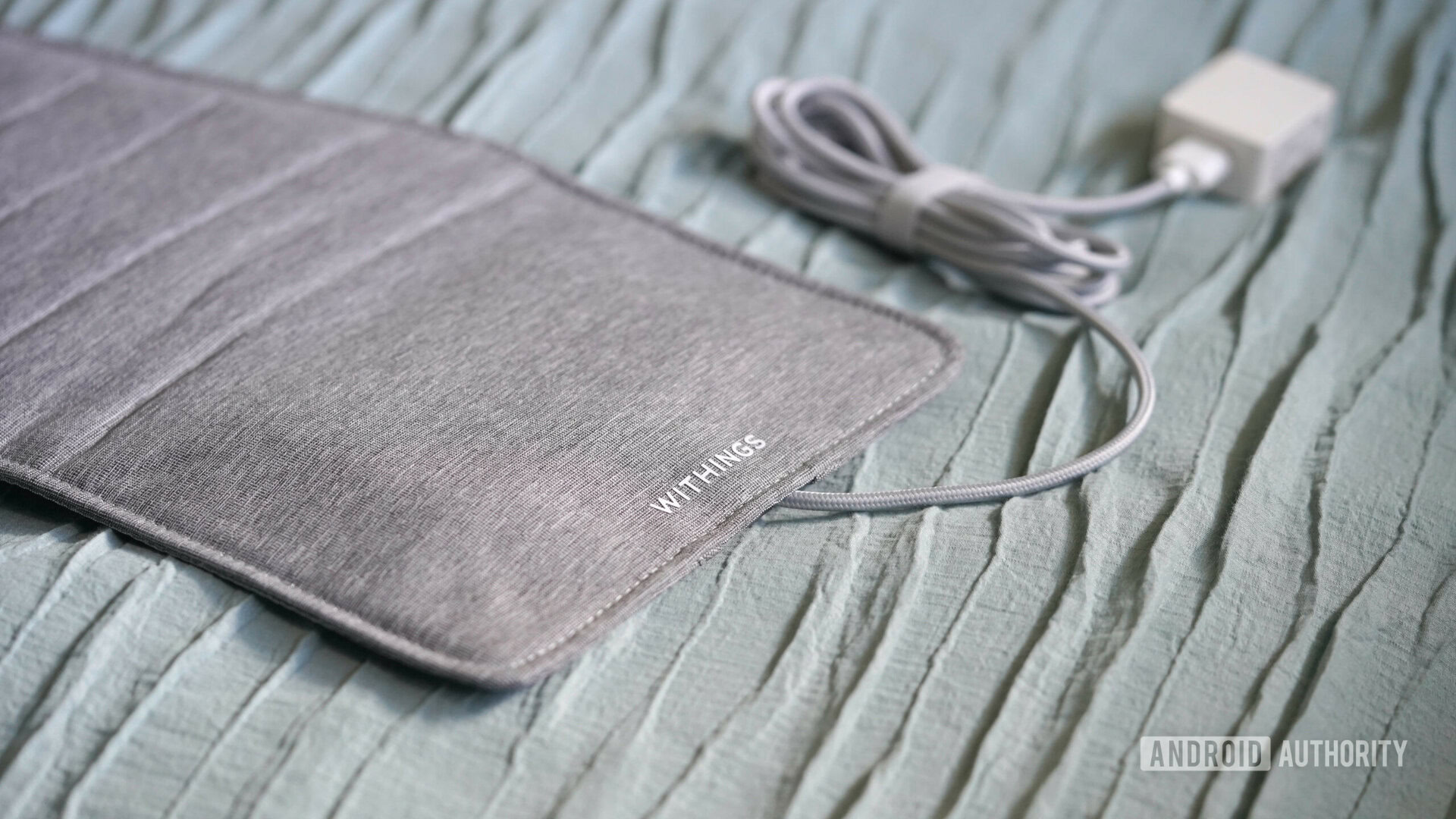
Better sleep insights may be as simple as slipping something under your mattress. The Withings Sleep tracking mat provides a set-and-forget solution to recording your overnight stats. If the only thing you want to wear to bed is a favorite pair of pajamas, this device offers the perfect alternative to wearable sleep trackers. Find out more in our Withings Sleep tracking mat review.
The tracker for passive tracking
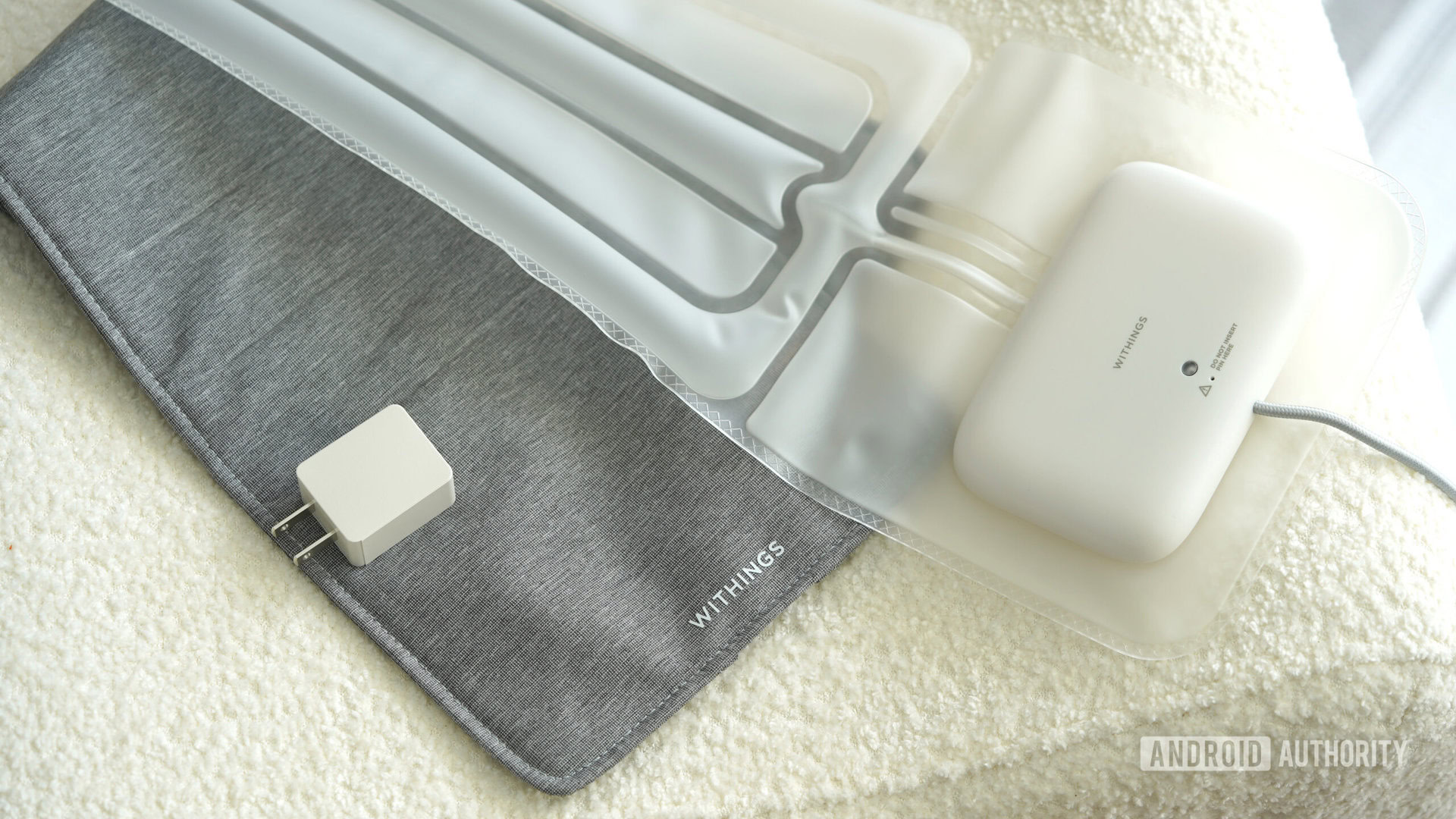
The Withings Sleep tracking mat (a.k.a. the Withings Sleep Analyzer everywhere beyond the US) is a truly noninvasive sleep tracker. The 5mm thick mat tucks underneath your mattress, passively recording your overnight data. Most importantly, the device does not have to be on your body to monitor your rest. It doesn’t even have to be on your bed (just under the mattress).
Instead of wrist-based sensors, the mat equips built-in pneumatic and sound sensors. These monitor your sleep stages, heart rate, snoring, and breathing disturbances. The pneumatic sensor measures heart rate and respiratory rate as well as body movement. The sound sensor records snoring and irregular breathing. All the data is then analyzed to provide helpful insights and a comprehensive sleep score.
Rather than depend on wrist-based sensors, the Withings Sleep tracking mat slips under your mattress for sleep tracking that won't disrupt your rest.
I have never understood the point of the Princess and the Pea, and now I’m more convinced than ever that she was just high maintenance. At 637mm x 190mm, the rectangular Withings Sleep is significantly larger than a pea but absolutely undetectable. Once you set up and calibrate the device, you’ll forget you ever added an extra bedmate.
That is until you check the Health Mate app to review your sleep data. Like most sleep trackers, the mat pairs with a companion app on your compatible smartphone. You’ll need either an iPhone running iOS 14 and higher or an Android running 8.0 and higher. You can download the Health Mate app from either the App Store or Google Play. In the mornings, you’ll automatically find a sleep score, plus detailed data about your sleep cycle and heart rate, noteworthy trends, and the option to activate sleep coaching.
How the Withings Sleep tracking mat works
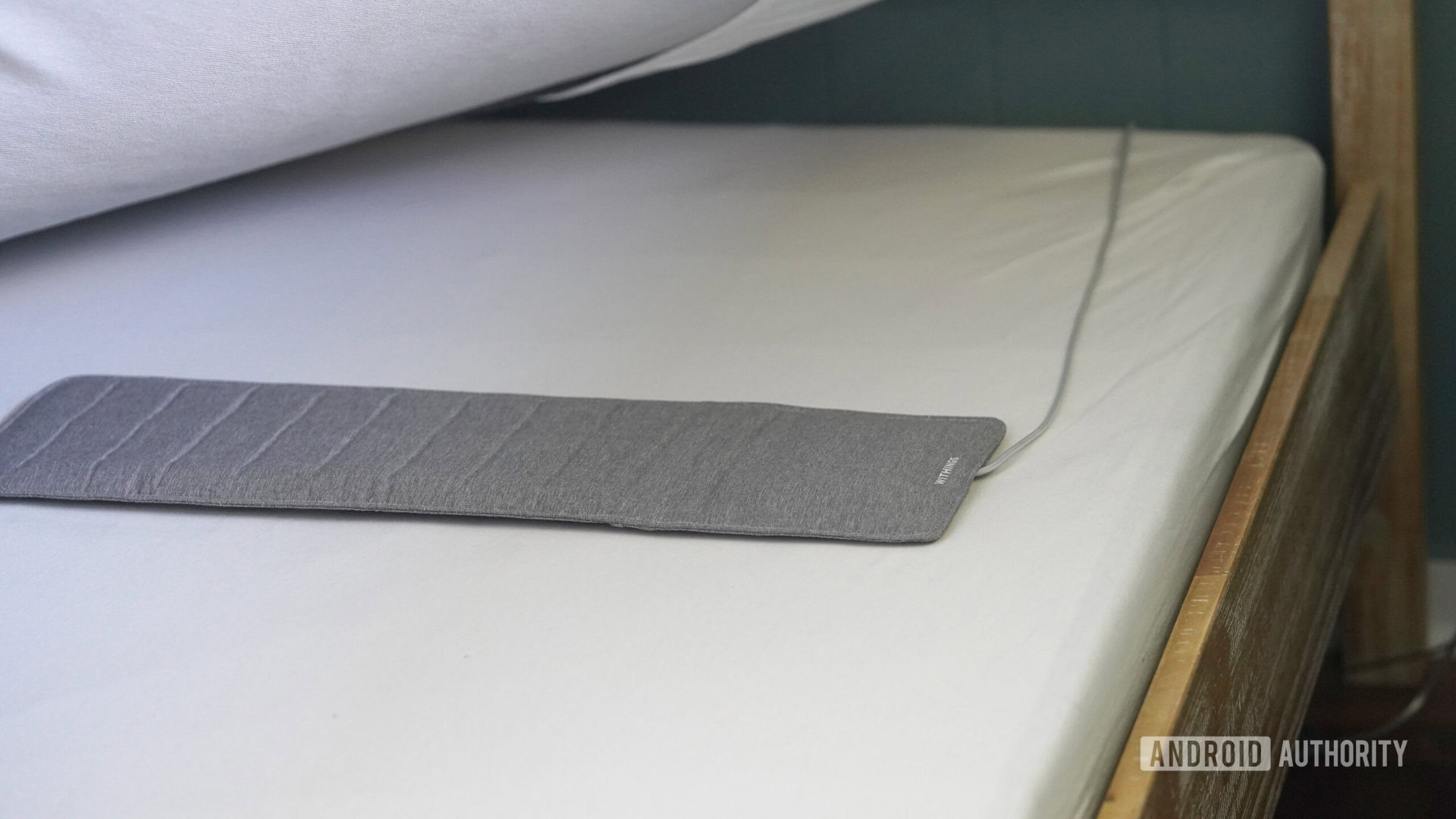
Setting up the Withings Sleep tracker mat is a short process but may require an extra set of hands. Luckily, you should only need to do it once. As mentioned, you first need to download the mat’s companion app to activate and install the device’s sensors. Fortunately, this is a subscription-free sleep tool, so there aren’t any surprise fees. Once the app is loaded, you’ll tap Sleep Sensors and install the mat. Then, you’ll need to call on a reliable friend to hold your mattress aloft while you align the Sleep pad below wherever you typically slumber. For me, this is the right side of the bed, farthest from the door, so bad guys get my partner first.
After deadlifting your mattress, the second tricky part is that the Sleep needs to be plugged into an outlet. In fact, if you spring for one after reading this review, determine where to plug it in before you install it. Otherwise, you risk having a frustrated partner holding your mattress aloft for much longer than you both anticipated. The mat comes with a 5V 1A power supply and a USB power adapter with plenty of cord to snake below your bed frame. If you don’t have a conveniently located outlet, the plug may be an issue. However, if you can make it work, it is nice not to worry about charging the tracker or replacing batteries down the line.
To install the tracker, you'll need a conveniently located outlet and an extra set of hands, but you'll only need to do so once.
After the mat is down, plugged in, and your mattress is returned to its rightful place, you’ll be eager to lay down and get to tracking. Don’t. At this point, you have to follow a few more steps in the app, including linking the sensor to your Wi-Fi router and allowing your new mat to calibrate. This involves some suspicious buzzing while the mat’s air bladder and sensors adjust according to the weight of your mattress. Per Withings, the process should take about ten minutes. In my singular experience, it’s closer to 35 minutes. I highly recommend not waiting until bedtime to start the setup process unless you want to pass out on your couch while you wait.
If you share a bed with someone who would also like to track their sleep, you’ll need a second sensor pad. The Withings Sleep tracking mat can only monitor one person at a time. You can, however, link both sensors to a single Withings account as two different users.
Out of sight and out of mind
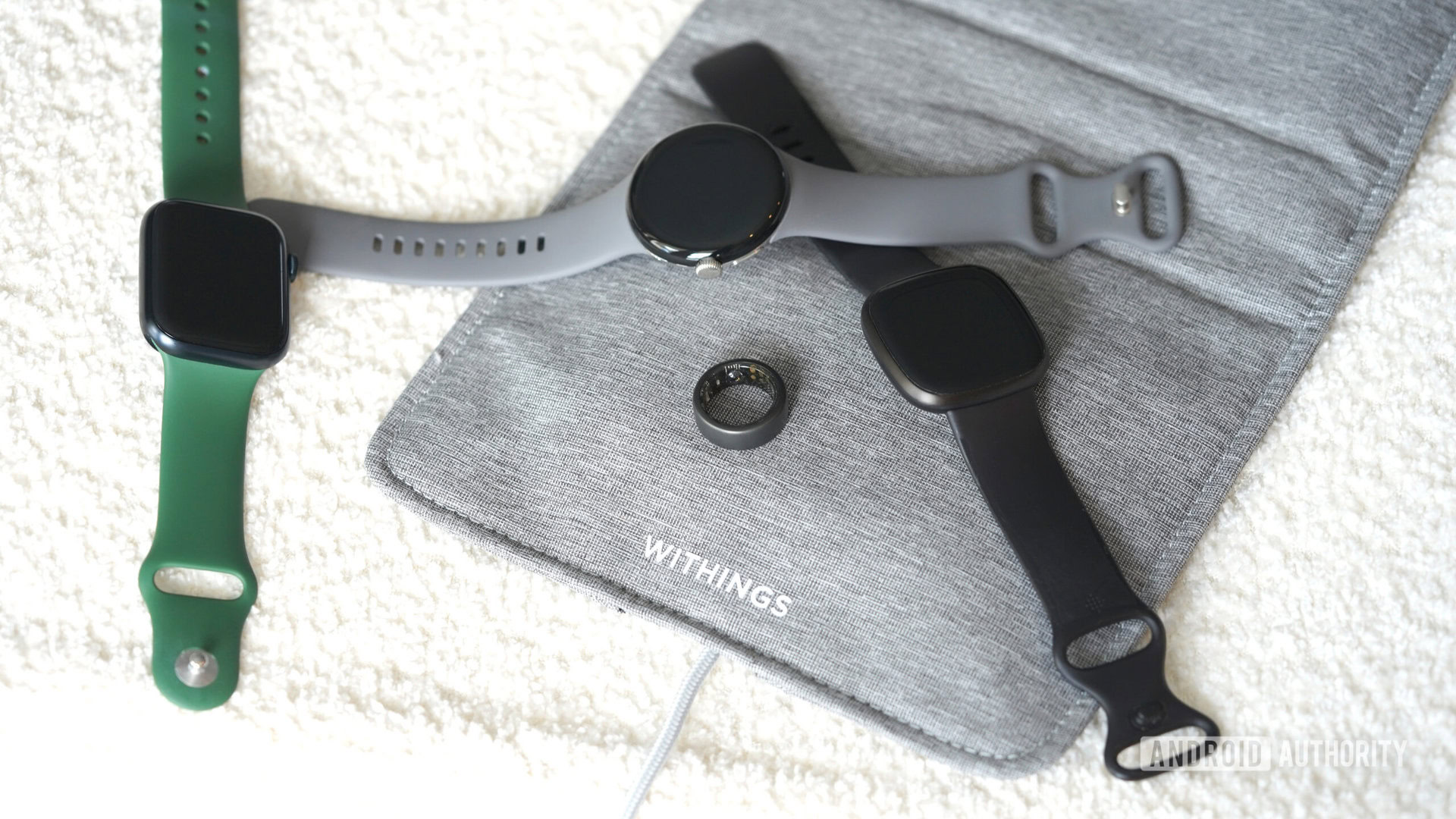
Between smartwatches, fitness trackers, rings, and headbands, there are plenty of options for donning a device that will count your Zs. One of the greatest strengths of the Withings Sleep is that it’s not wearable. If you find wristwear bulky or tend to strip off other devices in your sleep (i.e. the Muse headband), a secure tracking mat is a much better alternative. It also doesn’t introduce a bright screen or distracting notifications into your bedroom. Even the unobtrusive Oura Ring 3 occasionally flashes red LEDs in bed.
Once installed, the Withings Sleep is neither seen nor heard. In fact, if you don’t take the time to open your Health Mate app, you might even forget your sleep is being tracked at all. When you’re ready to review your data though, it’s always just a few taps away. Likewise, since the mat plugs into your wall outlet, you never have to remember to charge up a device or strap on a tracker you removed before your shower. Throughout my testing, I grew accustomed to the luxury of simply hitting the hay rather than incorporating devices into my bedtime routine.
In a world overrun by wearables, Withings offers a distraction-free, chargerless option.
This raises one opinion I didn’t expect to gain from my review period: As a regular wearable user, I would not be opposed to doubling down on sleep tracking. Even though I often sleep with my Apple Watch on my wrist, I love the idea of a secondary, passive tracker. For example, if my watch is charging in the kitchen and I fall asleep reading in bed, I will still have data to review in the morning. If it’s 1 AM and I realize my watch is down to 10%, I’m similarly nonplussed — I know my mat is plugged in and ready to record.
Withings offers a robust health-tracking platform and a no-frills system of tracking sleep with minimal effort. Its app is user-friendly and rich in useful data to improve sleep. I wouldn’t travel with the mat, however, so I would still only rely on a wearable when not sleeping in my own bed.
How accurate is the Withings Sleep tracker mat?
While convenience is nice, it’s also irrelevant without accuracy. Fortunately, the pad delivers on both fronts. Throughout my time testing the Withings Sleep tracking mat, the data closely correlated with other highly-rated sleep trackers. My sleep duration, onset, and wake times all aligned with my Versa 4 and Oura Ring 3, both of which are reliable for sleep tracking. It also correlated with my Apple Watch Series 8 on the nights I wore my daily driver to bed. Sleep stages were also similar, though devices rarely match up perfectly.
Utilizing the mat’s sound sensor, I recorded low levels of breathing disturbances, which matches my historical data on that front. According to me, my partner, and now Withings, I also don’t snore. Unfortunately, the mat is not yet FDA-approved to detect for signs of sleep apnea in the US. That said, the data it collects in terms of breathing disturbances can still be hugely beneficial to anyone concerned about the sleep disorder.
My sleep scores also consistently reflected my perceived experience. Withings sleep scores are based on sleep duration, depth, and regularity. They also take into account interruptions, the amount of time it takes to fall asleep, and the time it takes to get out of bed. The mat records these data points based on three calculations: physical presence and movement, respiration rate, and heart rate. The last of these it calculates via ballistocardiography, a method of measurement based on the movement of your body caused by the ejection of blood at each cardiac cycle (from the beginning of one heartbeat to the next). In other words, the mat records a ton of data despite never touching your body and then processes that data through an algorithm that I found to provide accurate scores.
Withings records accurate overnight data including sleep stages and breathing disturbances and provides a helpful, daily sleep score.
Withings also automatically generates a Sleep diary for you to review your data and trends over time. You can export and share this diary at any point in a one-month, quarterly, or custom date range. Additionally, the Withings companion app also offers health and diet tracking, step counting, and lifestyle coaching. You can also export your data to privately share a PDF of this health information with a doctor. This health report includes activity, weight, sleep, heart health, and blood pressure, as well as sleep apnea measurements if you are outside of the US. While I didn’t need to share my data, this is a very useful feature.
Beyond the bed
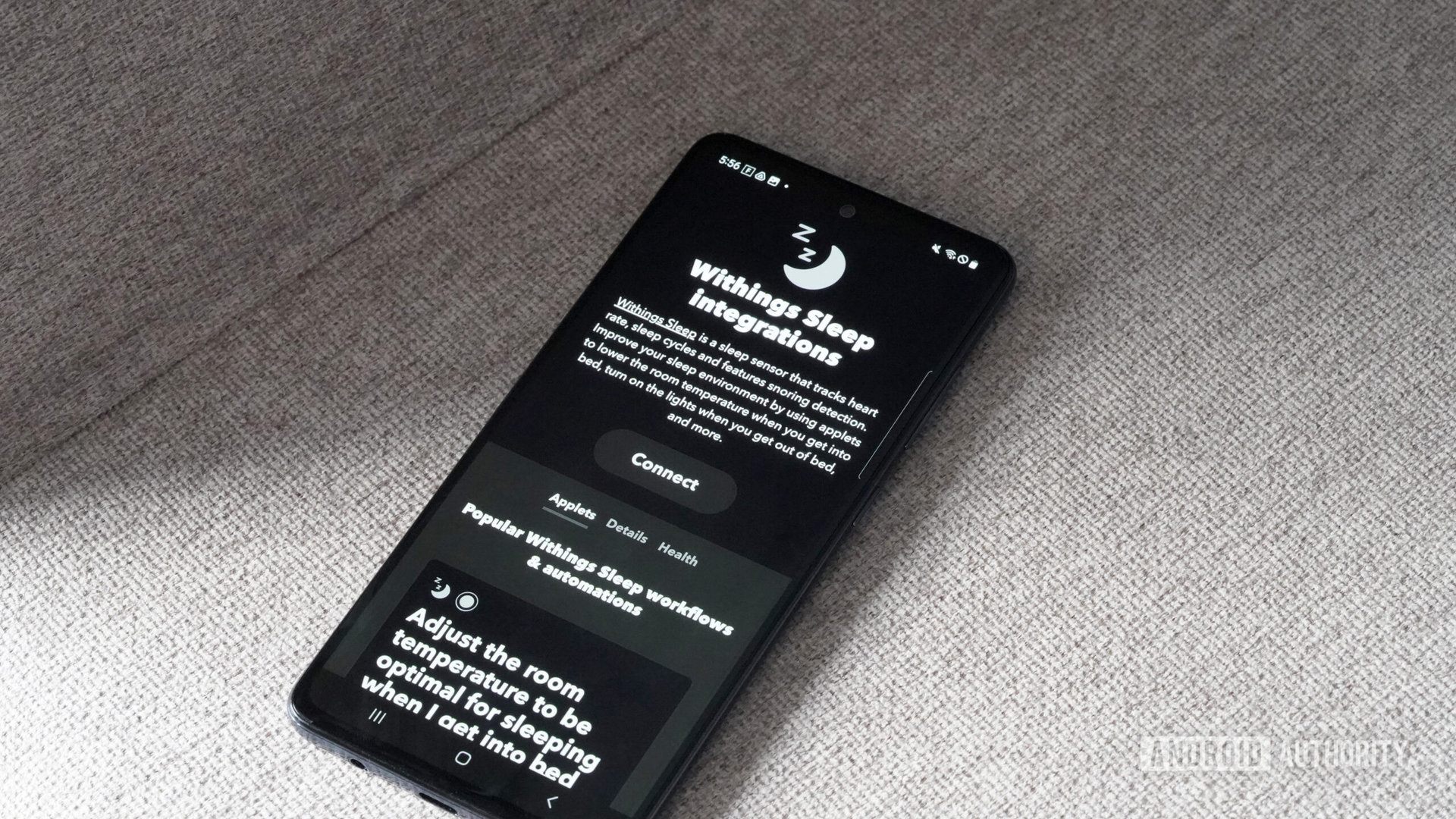
If you want to make your Withings Sleep even harder working, you can also connect the device with compatible tools to streamline your bedtime routine. Linking the device to IFTTT allows you to program your mat to perform other actions. The setup is easy within the Withings Health Mate app and there are tons of automation scenarios to browse.
Some of the most obvious include dimming smart lights when you lay down or automatically adjusting the bedroom’s temperature. More data-focused options include tracking your bedtime in a Google spreadsheet or exporting your sleep data when you wake up. These features are simple to initiate and can help you create a better sleep environment as well as better sleep habits.
Withings Sleep tracking mat review: A no-maintenance sleep companion
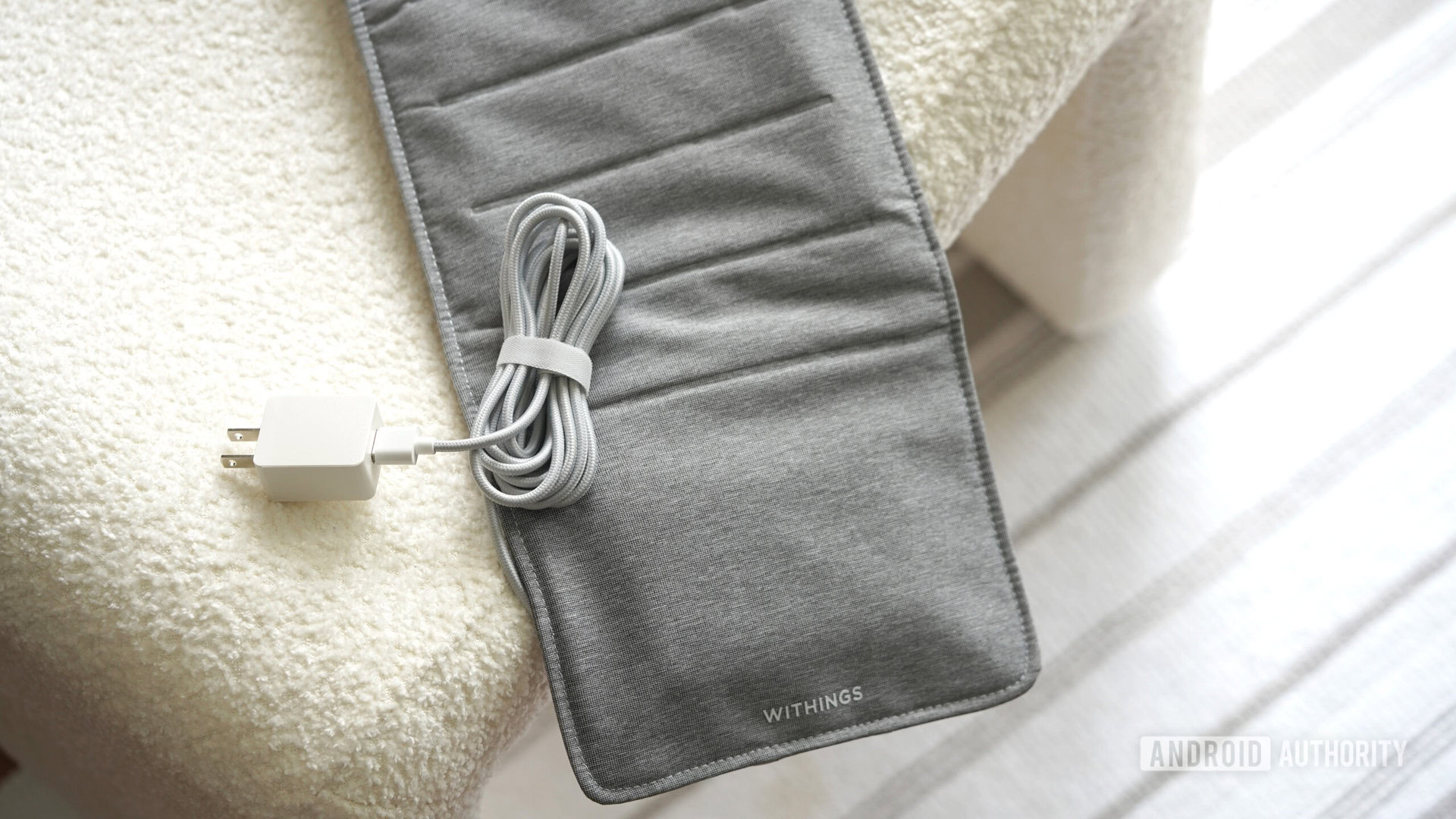

The Withings Sleep is hands-down one of the best nonwearable options available for an in-depth look at your overnight stats. It’s also fairly affordable at just $130. When you throw in the convenience, analysis, automation, and useful sleep diary, it’s a powerful tool. While no device will tuck you in, the Sleep mat doesn’t add any extra steps to your wind down. It also won’t distract you overnight or prompt you to answer another group text before dozing off.
On the flip side, this is strictly a sleep-tracking device with limited uses once the sun comes up. Beyond recording naps, the mat has no day job. Other sleep-tracking devices, like the Withings Scanwatch ($299 at Amazon), record your 24-hr activity and put some smart features on your wrist. If you want to access those types of tools, you’ll need to supplement the Withings Sleep with another device. If you’d prefer a one-stop shop and are open to wristwear, Fitbit devices boast useful sleep-tracking tools and can also clue users into signs of sleep apnea.
The Withings Sleep is hands-down one of the best sleep trackers, and you don't even need to wear it.
Another noninvasive option is the Google Nest Hub (2nd Gen) ($99.99 at Best Buy), which adds a display and smart home features, though the device won’t provide heart rate data. The Withings ecosystem is a better play if you want detailed sleep tracking.
You can purchase the Sleep tracking mat from Withings or third-party retailers like Amazon. The company even offers a trade-in program for old Apple Watches that may be worth looking into if you have extra devices on hand. The mat also comes with a 30-day full refund policy so you can test it out with no strings attached. If you decide to keep the mat, Withings offers a two-year warranty.


Withings Sleep tracking mat FAQs
Yes. The Withings Sleep tracker mat requires a compatible smartphone to run the Withings Health Mate app. It cannot be set up from a computer.
You can remove the Withings Sleep tracking mat’s fabric cover and throw it in your machine to wash. Let the cover air dry before reinstalling the device.